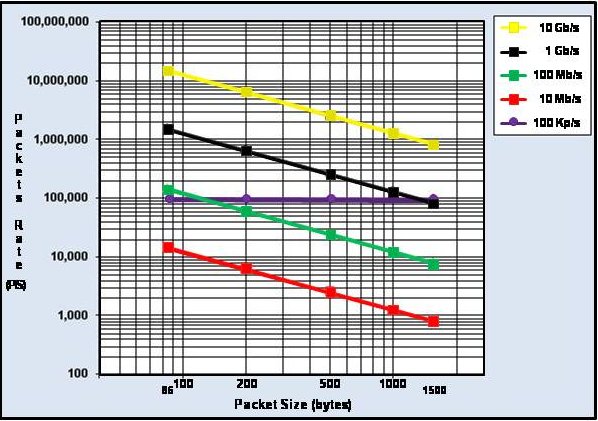- VMware Technology Network
- :
- Cloud & SDDC
- :
- ESXi
- :
- ESXi Discussions
- :
- pNIC to VM ratio
- Subscribe to RSS Feed
- Mark Topic as New
- Mark Topic as Read
- Float this Topic for Current User
- Bookmark
- Subscribe
- Mute
- Printer Friendly Page
- Mark as New
- Bookmark
- Subscribe
- Mute
- Subscribe to RSS Feed
- Permalink
- Report Inappropriate Content
pNIC to VM ratio
All,
I am using currently VI3.5 environment...I have read on forums in a few places that best practice is 8:1 vm-to-pNIC ratio in VI3. With an upgrade to vsphere on the horizon, I am wondering if anyone knows if this "general" best practice has increased or stayed the same in vsphere? An official statement/link from VMWare would be great, but I can't find anything. I realize that this is heavily dependant on what my VM's are running, but I'm just curious if the overall concensus is that this best practice is the same on vsphere. Thanks for any info.
- Mark as New
- Bookmark
- Subscribe
- Mute
- Subscribe to RSS Feed
- Permalink
- Report Inappropriate Content
You are right the workload is what is critical so if you are hosting multiple high network consuming vms then I would worry about that but is you these are just standard machines then I would no be concerned because I have never run across an issue of network contention particularly if I had at least 4 GB nics dedicated to VM traffic so I never worried about vm per vNIC ration -
- Mark as New
- Bookmark
- Subscribe
- Mute
- Subscribe to RSS Feed
- Permalink
- Report Inappropriate Content
thanks...for most part these are just "standard" VMs...nothing too crazy running on them that would indicate high network usage and I have never had an issue with contention in the current env. The new environment proposed would consist of fewer, more powerful physical boxes and they want to consolodate a few of my current clusters, but no one has indicated to me that they will keep the pNIC to VM ratio the same. So essentially everything would stay roughly the same (CPU/Memory/SAN) just on fewer boxes, however, they are not taking into account that 16 pNICS dedicated to VM traffic across two clusters is now going to be only 8 pNICs on the new cluster in vsphere. If nothing drastic has changed in vpshere, then I would think they want to keep the current ratio going forward to prevent any unforseen issues.
Granted, 8:1 is what I have heard is best practice, but in actuality, our environment currently has about 20:1 in some cases. My fear is that ratio would obviously go up even further if we have fewer pNICs to work with, then we are stuck as there may not be funding for more hardware. Would you agree that I should recommend to increase pNICs on the new servers to keep the ratio about the same?
- Mark as New
- Bookmark
- Subscribe
- Mute
- Subscribe to RSS Feed
- Permalink
- Report Inappropriate Content
Would you agree that I should recommend to increase pNICs on the new servers to keep the ratio about the same?
our 1GB ESX(i) Hosts have 4 1GB pNICs dedicated to the VM port groups. Our server environment runs about a 25:1 consolidation ratio of guest per hosts and we've never seen a problem with network contention.
Now for VDI, some cluster run upwards of 80:1, with the same amount of pNICs, and we see no network contention.
What am I saying is 4 1GB NICS for your virtual machine network should be very sufficient. However, we now have a 10GB environment and we run 2 10GB NICS and combine managment, vMotion and VM ports groups on one vSwitch. So, pick you poison ![]()
- Mark as New
- Bookmark
- Subscribe
- Mute
- Subscribe to RSS Feed
- Permalink
- Report Inappropriate Content
I've been thinking about this recently (either purchasing new NICs for NFS traffic or breaking apart the current vDS design) and have decided that there really is no way to ever come up with a "VM per pNIC" ratio, its all about packets / s and the size of those packets.
The limit to packets / s of a 1Gb interface at the normal maximum MTU (1500) is 81,274(http://www.cisco.com/web/about/security/intelligence/network_performance_metrics.html)

Now, these figures also represent what is likely the least latency with regard to data transmission. Clearly you could go with more packets per second but you would simply suffer from additional latency (on the LAN!)
So just hypothetical. 50 guests, pushing 1000 pkts/s and each packet is 1500 bytes. Thats a sustained throughput of 75MB/s on the NIC. You could increase your packet count or guest count by ~25% before reaching the maximums of a single NIC.
Conversely you could have 200 guests pushing 500 pkts/s and each packet is 550 bytes and you have a whopping 100k packets per second, but only 55MB/s. This is something more like you would see from an active VDI I would guess.
